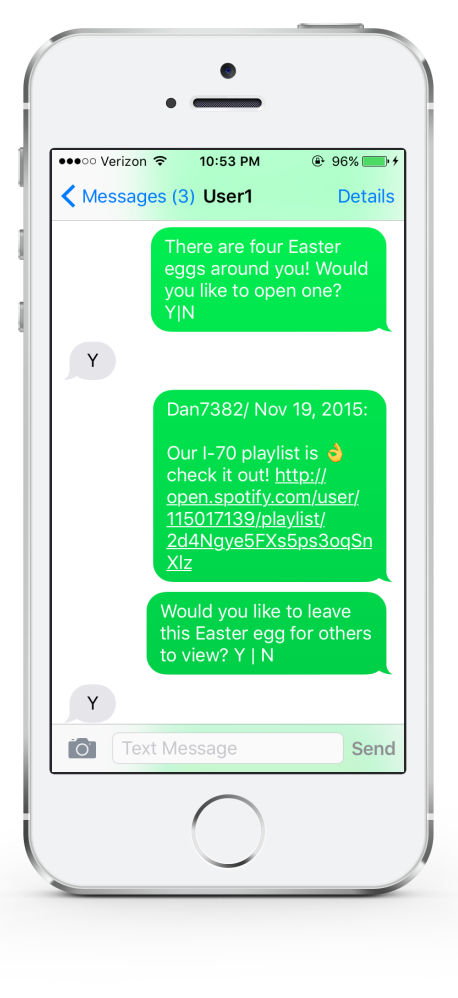Can sensor technology exist on and enhance the open road? I worked in a 4-person team to design an in-car app that creates momentary connections between car travelers.
SKILLS
prototyping // wizard-of-oz, hi-fidelity mockups
communication presentation, video, documentation
HOW DO WE CREATE AN EPHEMERAL CONNECTION BETWEEN TRAVELERS?
We want to recapture the sense of spontaneity and curiosity that we derive from a long drive, a confined space, and a destination. We want to evoke the sense of wanderlust and open-mindedness that encouraged travelers to start driving in the first place.
We envision a more memorable travel experience that leaves people with positive memories from within the car. How can we highlight that experience and create more of a sense of presence inside the car? Can existing and future sensors in the car enhance the journey?
MY ROLE
research // I conducted interviews and led the wizard-of-oz experiment.
product design // I designed the workflow and mockups of the Wisp service.
WISP: A SERVICE FOR LONG-DISTANCE TRAVEL
OUR PROCESS: UNDERSTANDING CARS AS AN IOT PLATFORM
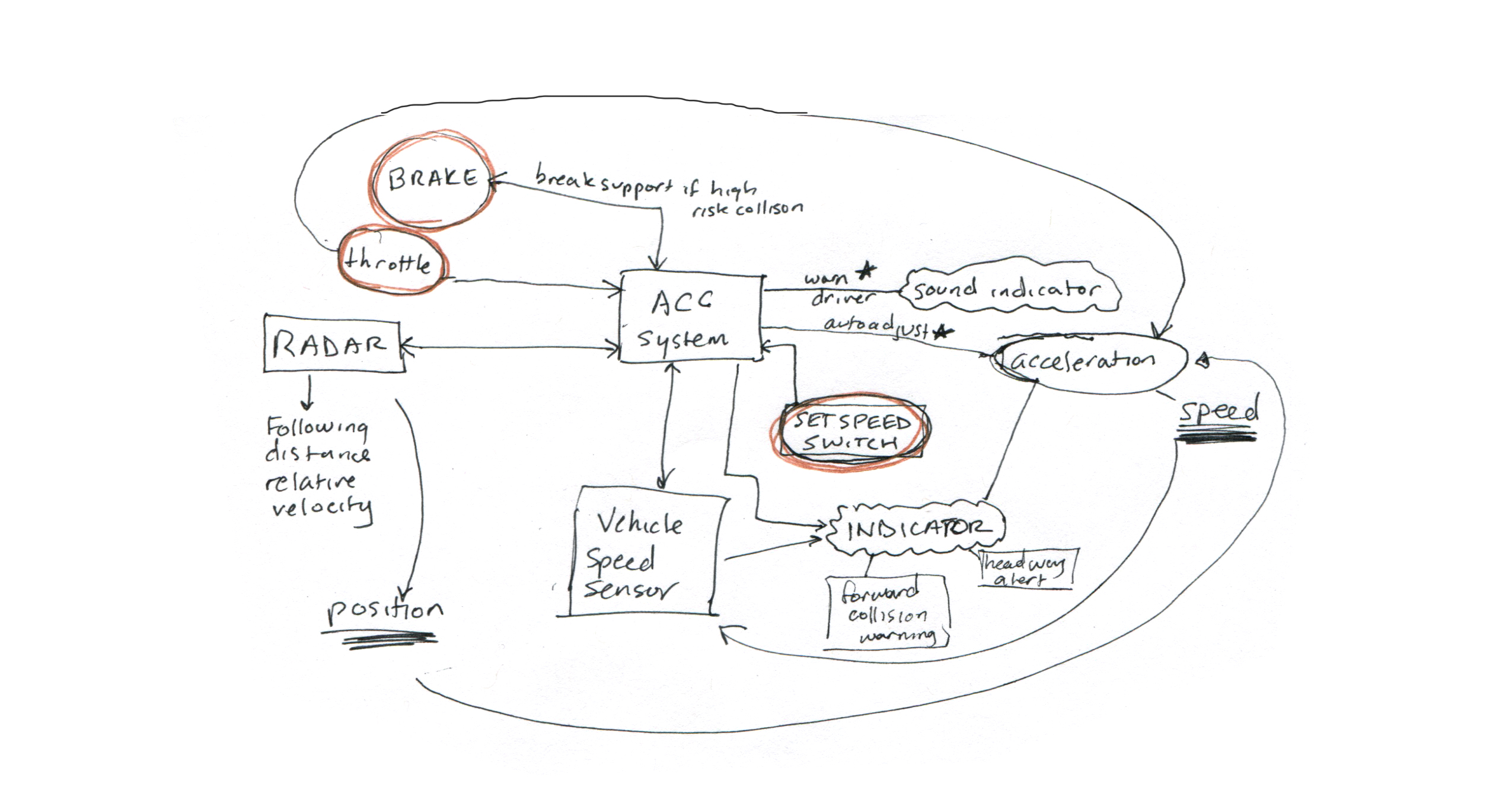
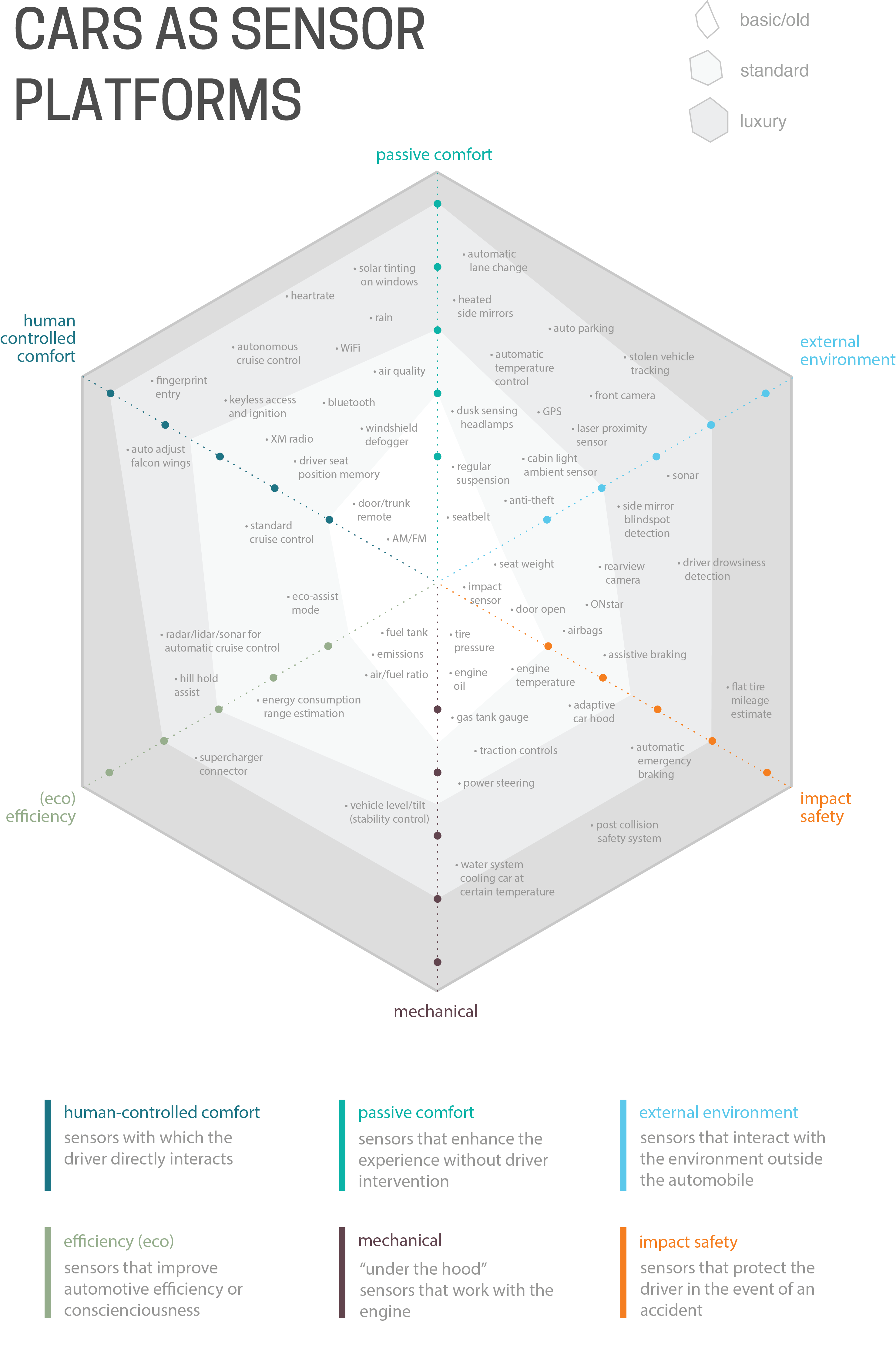 Our early sketches evolved into a spider diagram that modeled important sensors within a car
Our early sketches evolved into a spider diagram that modeled important sensors within a car
MAPPING THE CURRENT STATE OF ROAD TRIPS
To understand the potential value of this service, we considered likely stakeholders and modeled typical points of interest for long-distance travelers. Unsurprisingly, sharing economy services like Uber and Airbnb are increasingly popular in this space, especially with younger travelers. In particular, we were interested in capturing a shared travel experience among strangers.
We interviewed 8 users between the ages of 19 and 68. While all of them had some experience with long-distance car travel, not everyone was enthusiastic about driving. We learned about their painpoints and favorite moments. Because some of the negative experiences were unpredictable and not easily mitigated, we chose to focus on increasing their enjoyment through other means.
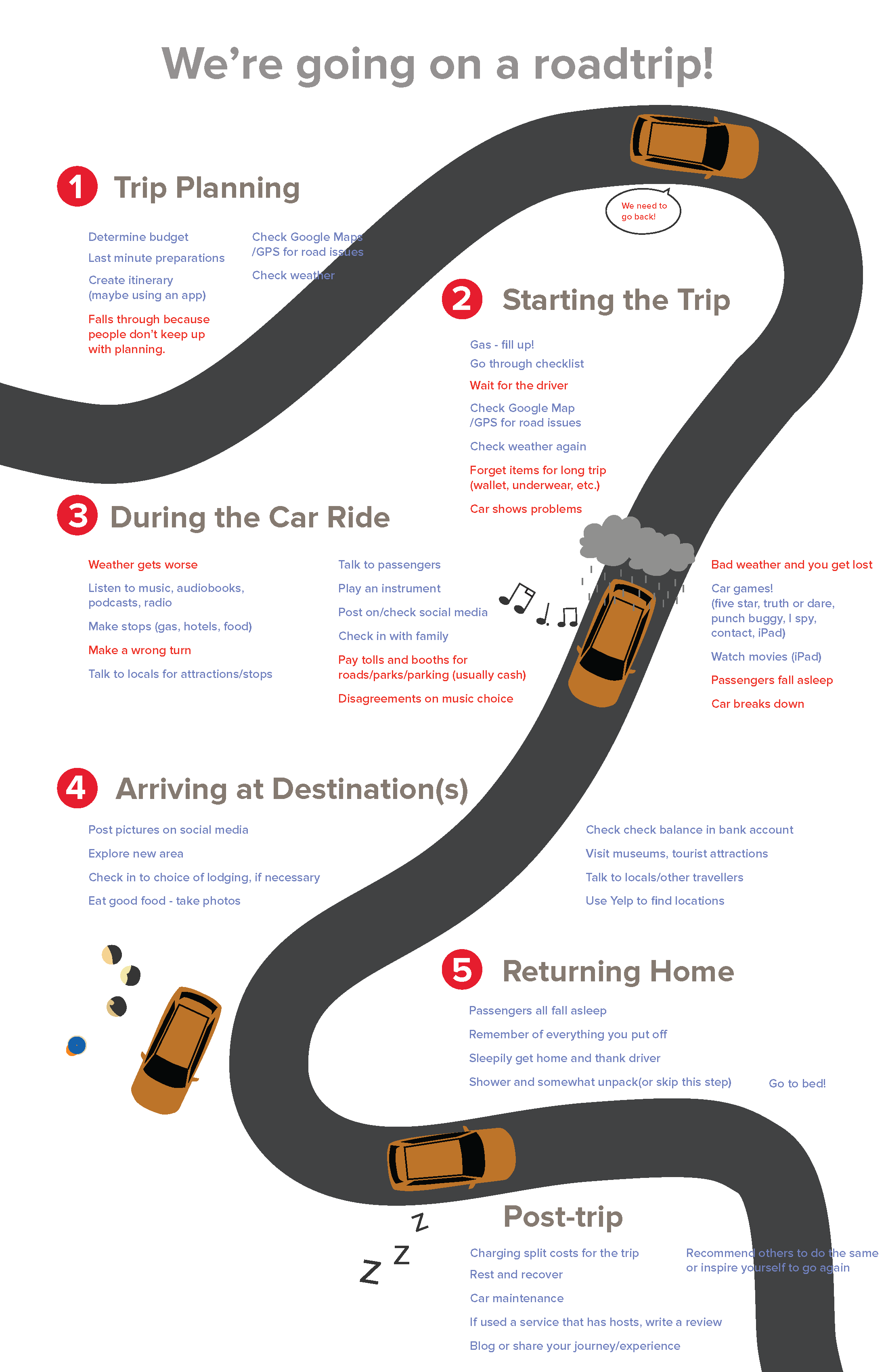
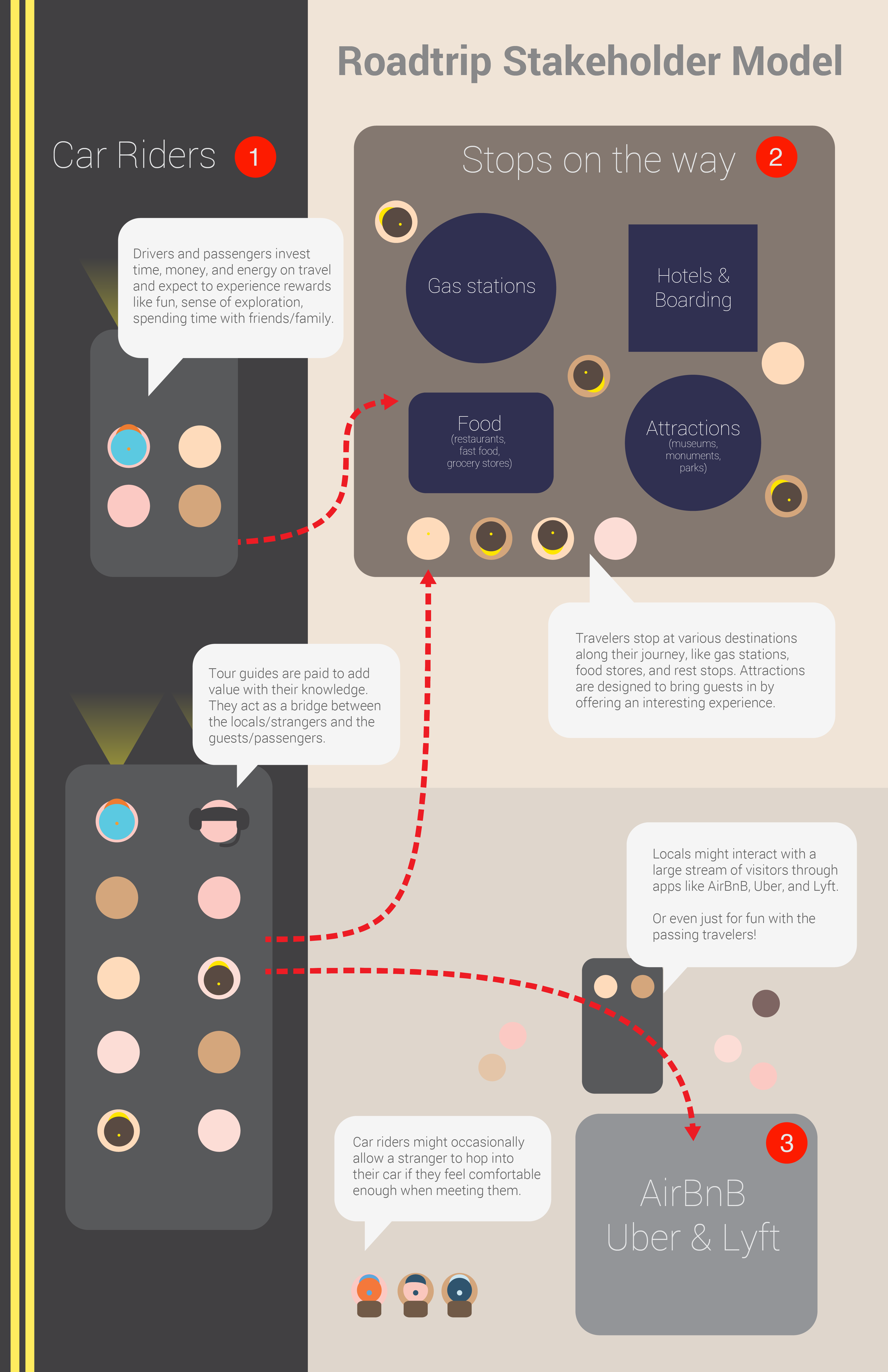
ARTICULATING OPPORTUNITIES
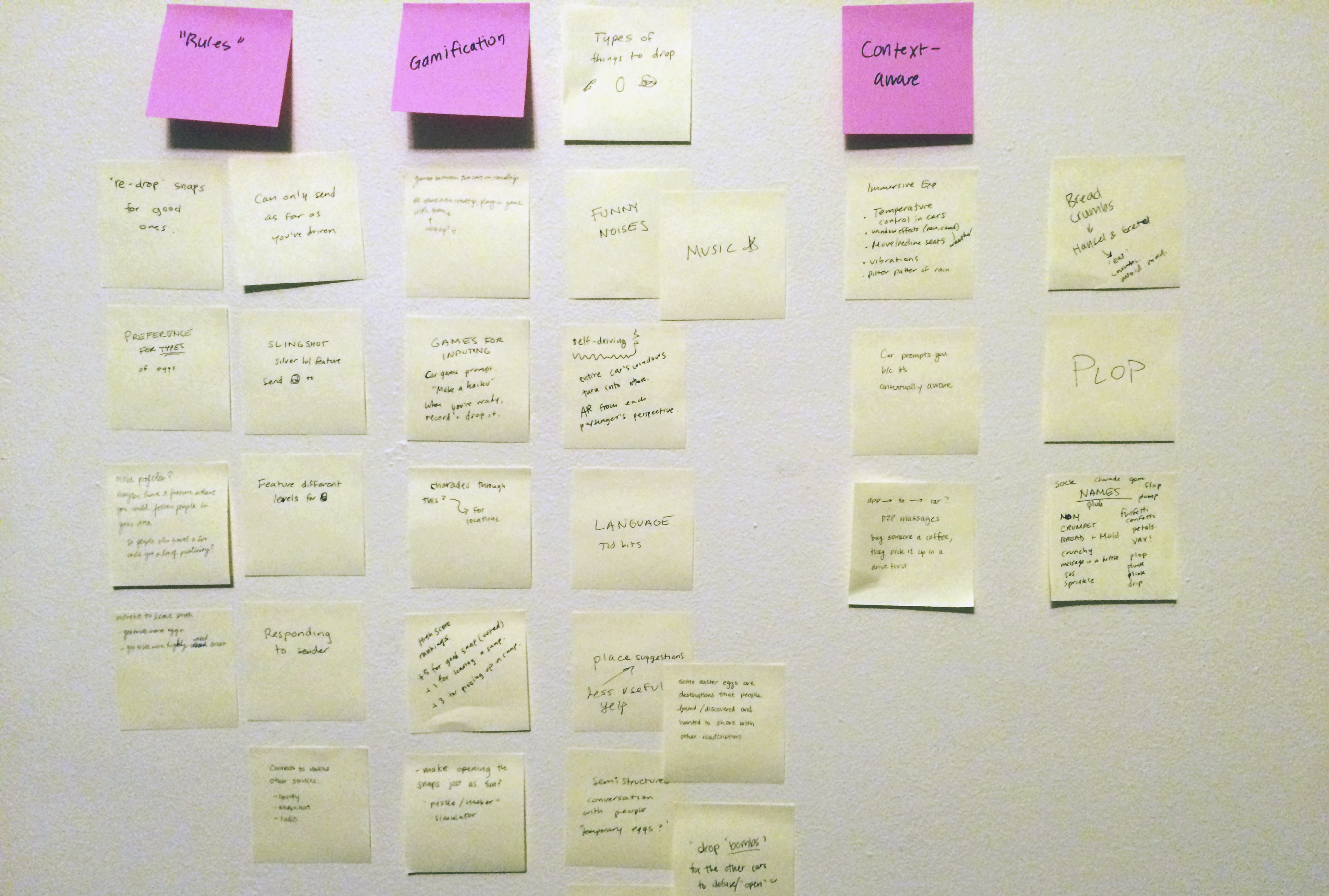
Based on user feedback, potential value, and feasibility, we storyboarded 5 of these ideas. We asked 16 potential users questions about these scenarios to understand their needs and motivations for travel.
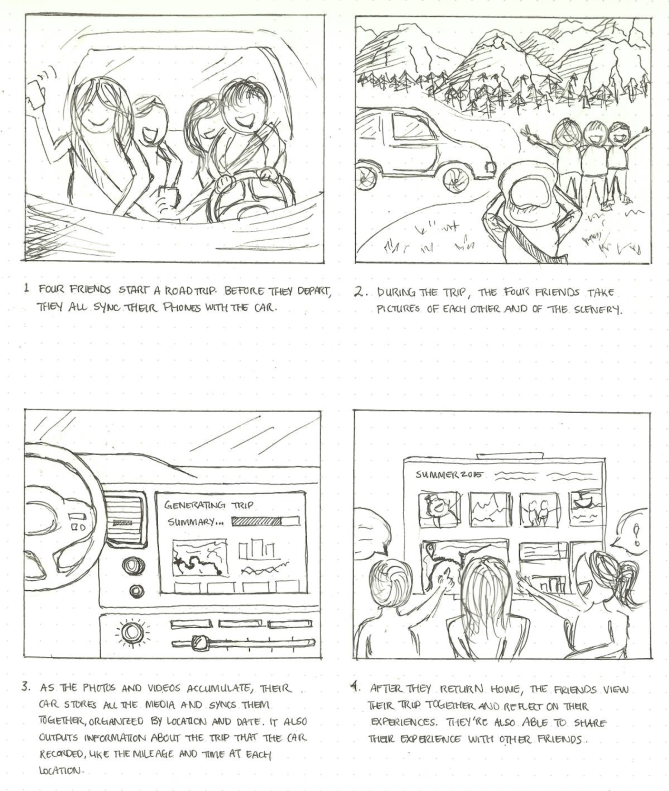
TESTING THE SERVICE
• Users can rate or rank users rather than content pieces (to keep content quality high).
• Users can filter the content they receive.
• Users preferred the ephemeral, minimal nature of service - they did not want to save the content or be able to chat with the other cars.
• The users, not the service, should determine their optimal frequency of notifcations.
• Future design ideas include more interaction with the external environment (e.g. projected content that appeared on billboards, interactions that used AR to transform the scenery or the car itself).
FUTURE WORK
A minimum viable product might include:
• Additional user testing with hi-fi mockups
• Phone application deployment
A future service might include:
• Expanded service for long-distance commuters
• Expand features that incorporates augmented reality into the car platform
• Interactions with the external environment (e.g., billboards)
